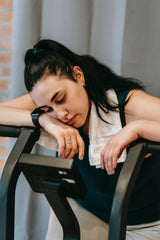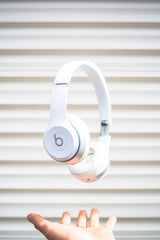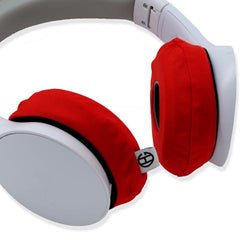Can I Change the Pads on my Beats Headphones?
You can change the pads on Beats headphones but it’s not a simple swap.
Beats didn’t design the cushions to be removed and replaced so you’ll need to do some low-key headphone surgery to take them off. You can use a flat-edged knife to lift the pads away from the adhesive but that’s not ideal if you don’t know what you’re doing.
And worse, Beats don’t sell replacement pads. You’ll need to buy those from a third-party seller. The quality of these can be something of a mixed bag. By swapping out the originals for an unofficial pair of pads, you may be disappointed by the new aesthetic. Picking the wrong size, colour or finish may also mean you quickly fall out of love with your Beats.
Why Your Beats Earpads Need Replacing
Headphones take a real beating throughout the day.
You wear them when you’re out; when you’re working or exercising. Over time, they all start showing their age, becoming vulnerable to wear and tear through regular use. Beats aren’t cheap. Wear and tear isn’t something you should have to worry about for years after the original purchase, but that isn’t always how it goes.
Beats use synthetic leather on the earpads. This is common practice amongst most headphone manufacturers as plastic leather is cheaper to make (and cheaper for the customer to buy); it’s relatively durable and looks similar enough to real leather to give a nod to real deal.
Moisture damage is the main reason why the pads on Beats headphones will need replacing. You sweat when you wear headphones. Maybe only a little. Maybe a lot. But any moisture left to sit on the cushion for extended periods can get inside the material and cause damage. This process will happen more quickly when you regularly exercise in big headphones or if you’re a gamer wearing them for extended periods.
The salt in sweat will dry out the plastic leather and you may notice the material cracking and then peeling. You’ll start finding small flakes of pleather on your shoulders, ears, against your face and in your hair.
The damage can be minimal or it can make the entire earpad look ugly. With Beats headphones costing hundreds of pounds and dollars, you’d like to think that they were capable of standing up to the tests of time. No one expects to replace brand new headphones within a year.
Sweat damage isn’t covered by warranty. Neither is cutting into your Beats headphones with a flat-edge knife and lifting the cushions off, making a mistake and causing even more damage. But desperate times calls for desperate measures and when you’re having to keep using a pair of earpads that are falling apart, it’s no wonder that so many people are tempted to remove the earpads themselves.
But there is a more proactive way to protect your headphones from moisture damage. For some, this means doing something before the headphones start showing signs of damage. For others, it’s about covering up any existing damage and then slowing its progress.
Adding Moisture-Resistant Headphone Covers to Your Beats
Moisture resistant covers are the easiest and most affordable way of protecting your Beats headphones. They’re also the most attractive. You can pick from a wide range of different designs and colours to ensure your earpads complement not only the rest of your headphones but your personality, too.
Headphone covers are material sleeves that fit over the cushion of your headphones. They’re easy to add on and come in two sizes: one for over-ear and one for on-ear headphones. They fit snuggly but can be easily removed.
Headphone covers can be made from all sorts of materials including cotton and silicon but we wouldn’t recommend using these. Because whilst they both provide a barrier between the earpad and the sweat, the sweat will just sit there on the surface. For cotton, it may even start seeping inside when left for too long. For silicon, it’ll stay there until you wipe it away afterwards. Not ideal if you’re exercising or gaming. Sweat that sits on the skin for too long can lead to acne.
Headphone covers made from a sweat-wicking fabric are your best option. The material is a mixture of polyester and spandex and is commonly used in sportswear to keep athletes dry and comfortable during intense sporting events or exercises.
Sweat-wicking materials draw moisture away from the headphone to the surface of the fabric where it can then evaporate off the body. It takes moisture from the headphone and it keeps you feeling comfortable.
Silicon-based covers can also be uncomfortable against the ear. After exercising, users are encouraged to wipe the sweat away from the silicon with a cloth but with material headphones, it’s as easy as putting them into a washing machine. This helps them stay hygienically clean.
If your headphones are showing signs of damage, adding moisture resistance covers to slow down that damage is a good idea. They’ll also cover up any unsightly stains or cracking.
It’s not only Beats that suffer from this problem. Most major brands do too. Bose, Sony, Sennheiser, etc. Sweat can damage headphones regardless of brand.
Adding headphone covers is far easier than taking a knife and peeling back the adhesive inside the headphone. You’ll find plenty of YouTube tutorials but we think it’s much easier just to stop the problem before it gets to that stage.
GymHugz moisture-resistance covers are also reversible so you don’t always have to have a bold pattern or colour on your Beats. And they’re also great at stopping make-up stains from rubbing off onto the cushion.








